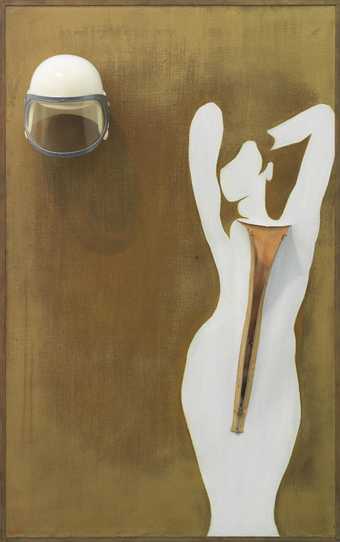
Evelyne Axell, Valentine 1966. Tate. © ADAGP, Paris / DACS, London 2023.
Beyond Pop
12 rooms in Media Networks
Artists from across the world have borrowed images from the mass media to comment on social and political issues
Pop art engages with the mass-produced imagery of popular culture. It is often thought of as a North American and British phenomenon, but in fact a wide range of different cultures and countries contributed to the pop movement during the 1960s and 1970s.
What unites the diverse work in this room is the presence of figures or other recognisable forms – a reaction to the dominance of abstraction in mid-twentieth-century art. The imagery is often borrowed from advertising and the popular press, and many works mimic the bold shapes and colours of product packaging or signage.
But as the works here show, drawing on popular or commercial sources doesn't lead pop art to celebrate consumerism. Instead it can encompass a range of responses, from cool irony to subversive social critique.
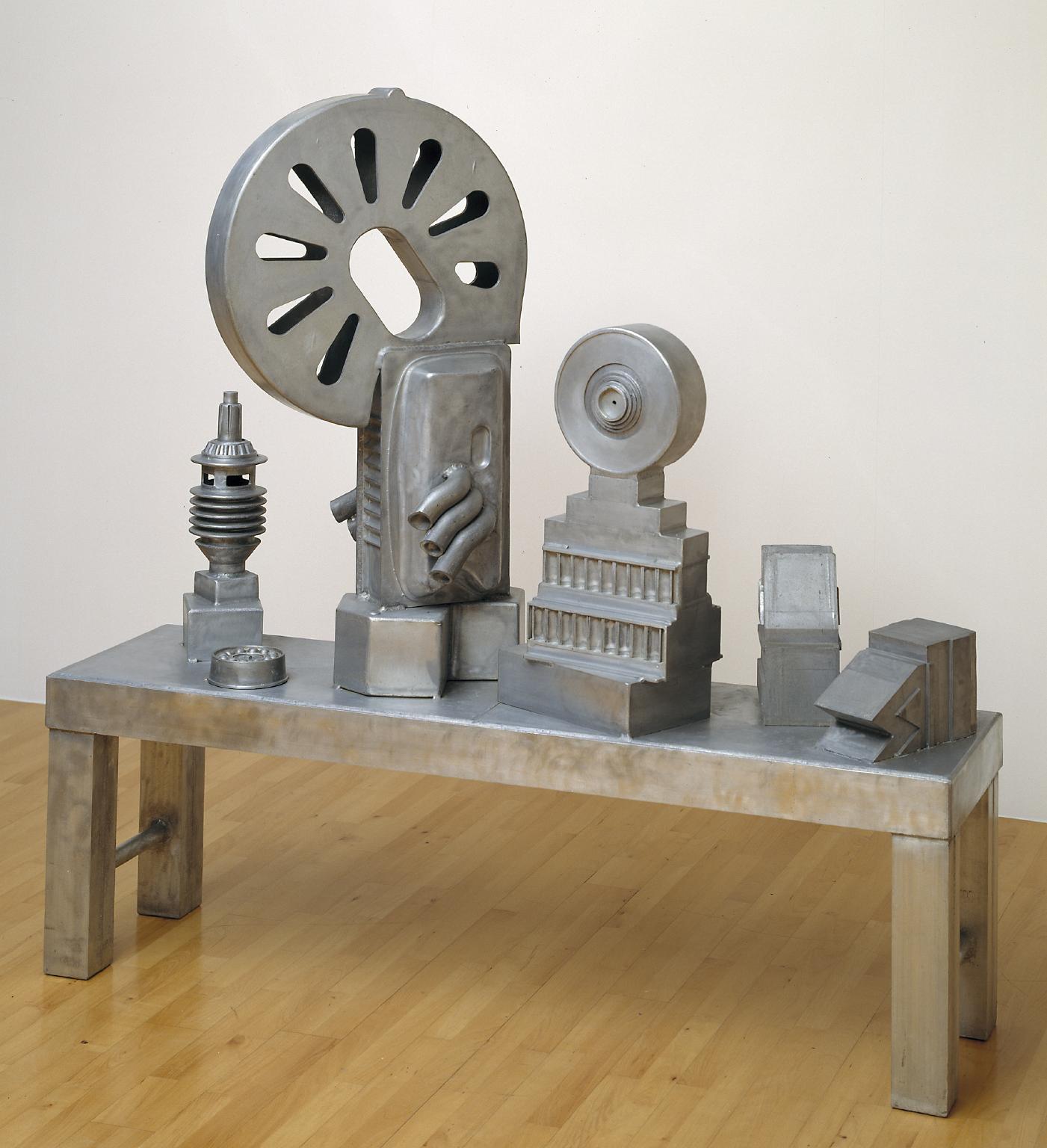
Sir Eduardo Paolozzi, Mechaniks Bench 1963
Paolozzi began making machine-like structures in the early 1960s. He said he wanted to eliminate ‘arty’ qualities from his work. Instead he aimed for an impersonal, engineered feel. The elements in this work are a mixture of castings from ordinary machine parts with castings from forms designed by the artist. He described his raw materials as ‘things that nobody would give a second glance... Part of the battle is to try, and resolve these anonymous materials into ... a poetic idea’.
Gallery label, August 2018
1/19
artworks in Beyond Pop
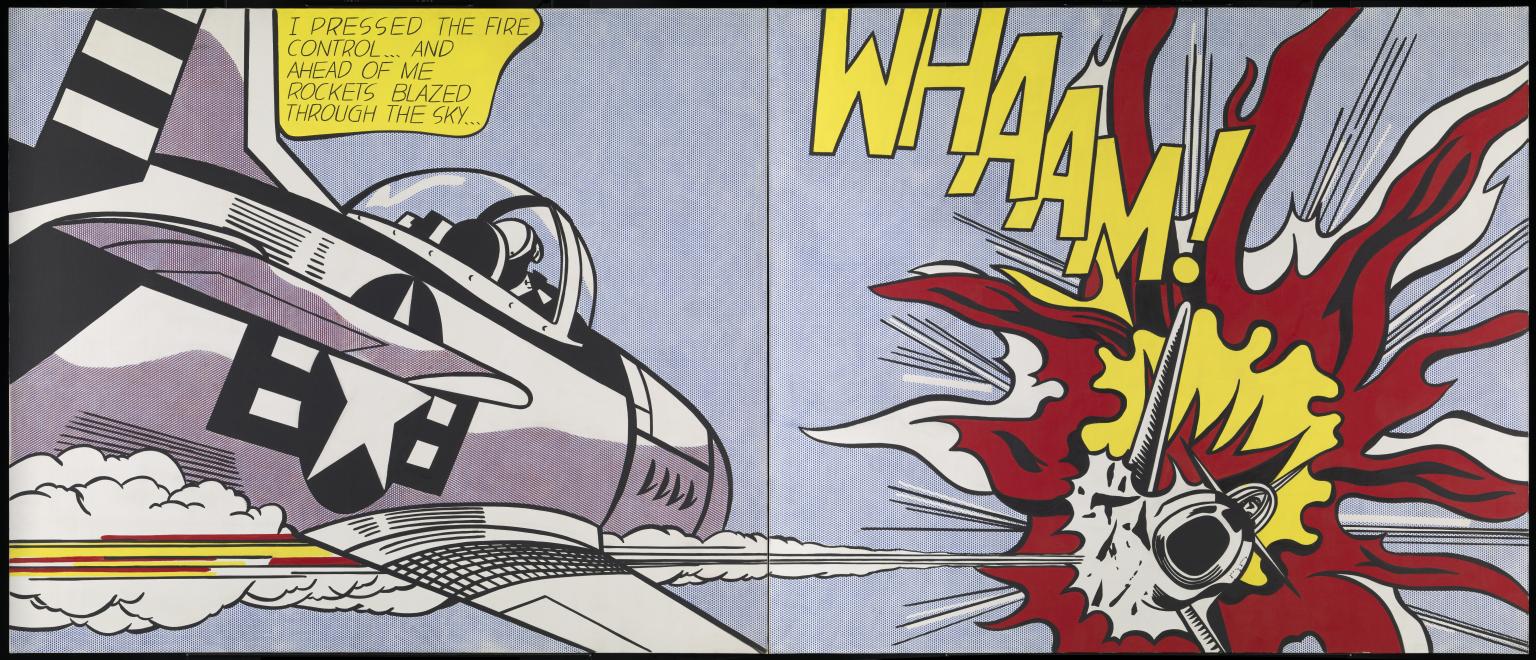
Roy Lichtenstein, Whaam! 1963
Whaam! is based on an image Lichtenstein found in a 1962 DC comic, All American Men of War. Lichtenstein often used art from comics and adverts in his paintings. He saw the act of taking an existing image and changing the context as a way of transforming it’s meaning. Lichtenstein was interested in emotional subjects, such as love and war. His work takes on these themes in a distant and impersonal way.
Gallery label, July 2020
2/19
artworks in Beyond Pop
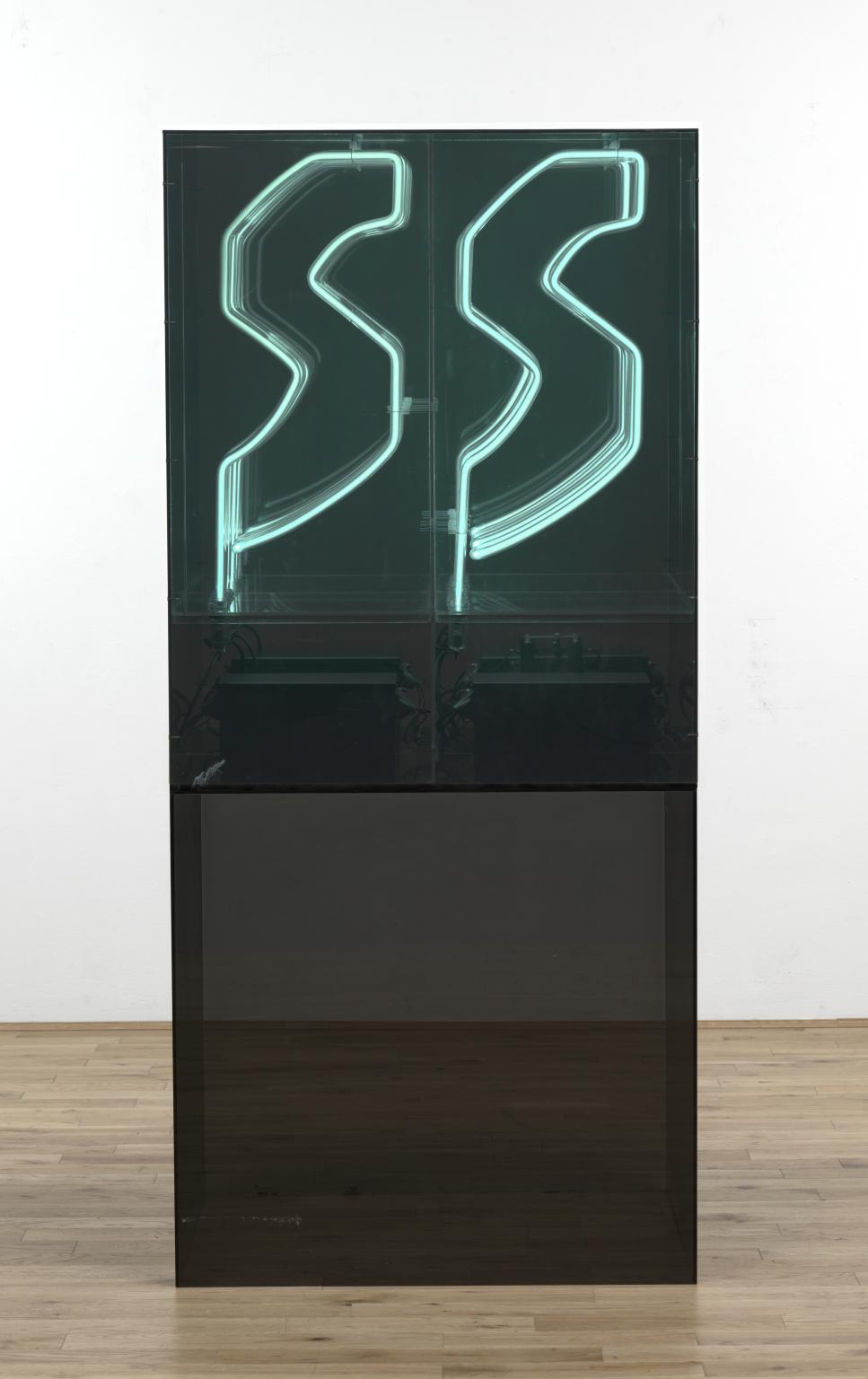
Chryssa, Study for Gates No. 4 1967
Chryssa was one of the first artists to use neon, previously just an advertising tool. She moved to New York in the 1950s and said she was inspired by Times Square ‘with its light and letters’. This work is made of sixteen blue neon forms housed in a grey Plexiglass structure made to resemble the night sky. The repeated forms are fragments of the letter ‘S’. Chryssa said, ‘I have always felt that when things are spelled out they mean less, and when fragmented they mean more.’
Gallery label, August 2018
3/19
artworks in Beyond Pop
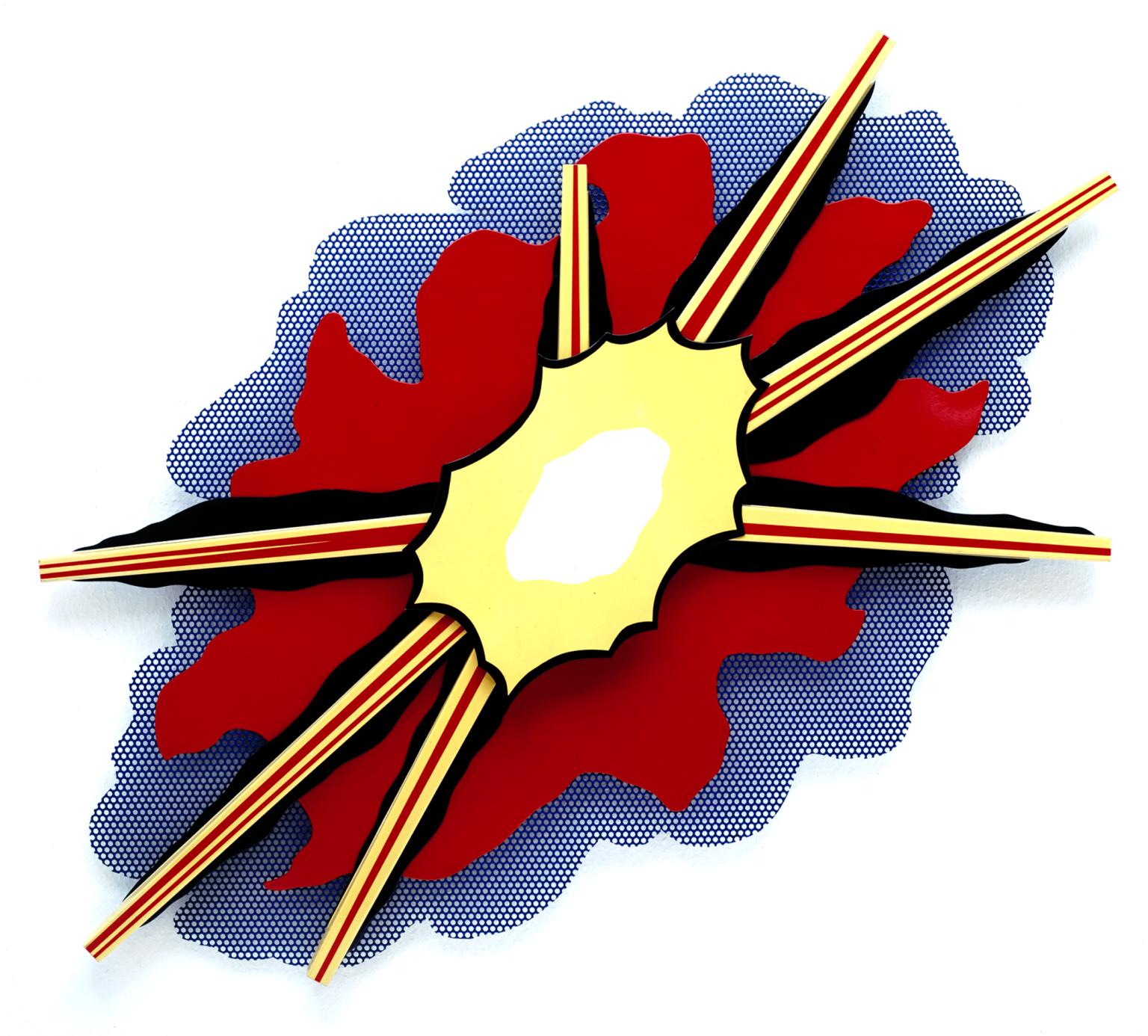
Roy Lichtenstein, Wall Explosion II 1965
This wall-mounted sculpture turns an explosion into a stylish icon. There is no sense of any resulting destruction. Lichtenstein made this sculpture at a time when the USA was heavily involved in the Vietnam War. It is based on an illustration in a popular boys’ comic that focused on the Second World War. The blue steel mesh with its regularly punched holes relates to the Benday dots used in printing of comics and newspapers.
Gallery label, August 2018
4/19
artworks in Beyond Pop
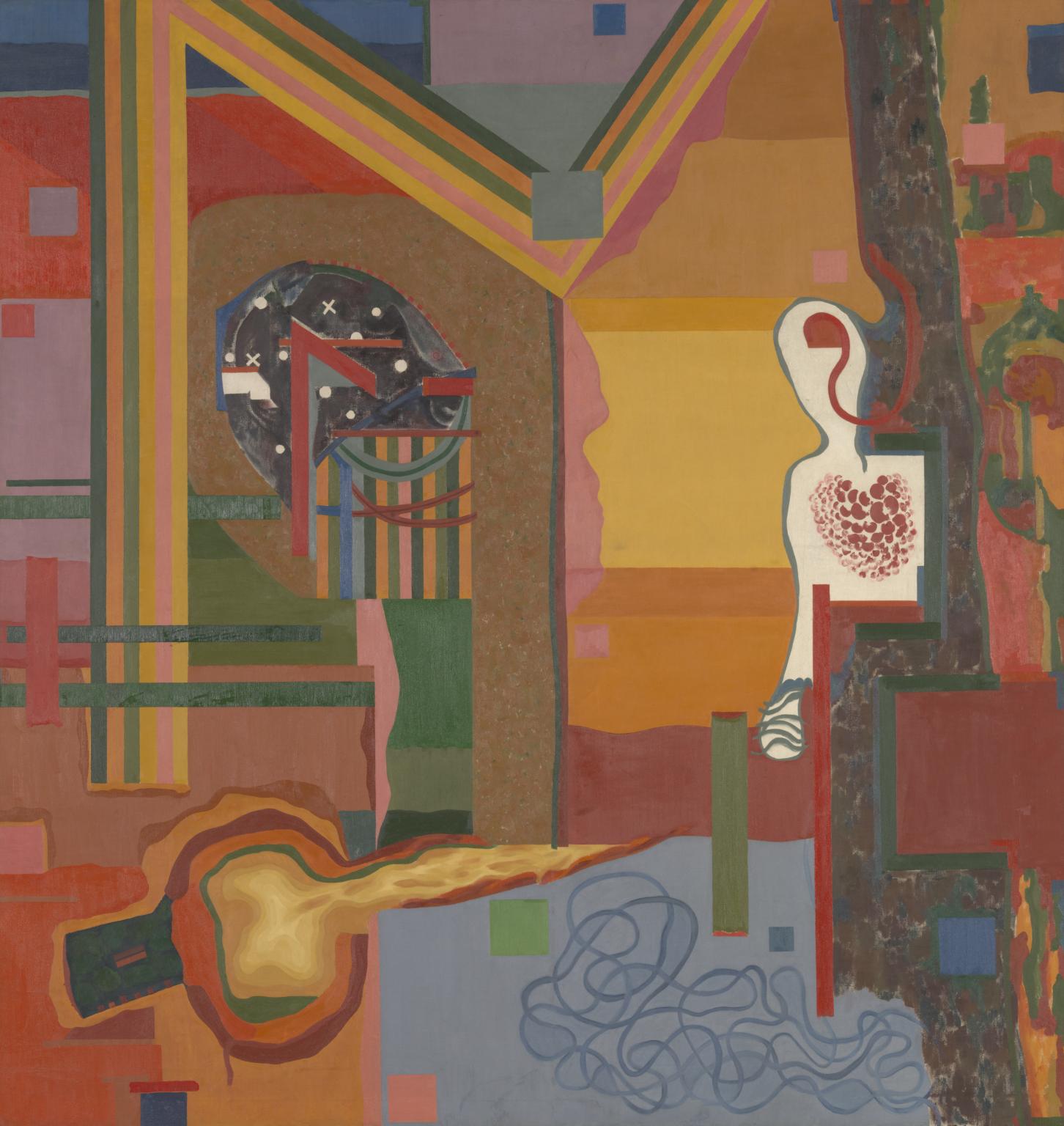
Vivan Sundaram, May 68 1968
In 1966 Sundaram moved to London from India to study at the Slade School of Fine Art. Here he was influenced by British pop artists, such as David Hockney and Richard Hamilton, as well as his American tutor, the artist R. B. Kitaj. Sundaram started making paintings referencing political issues using the bold colours and shapes of pop art. This painting refers to the student protests and civil unrest that broke out in Paris during May 1968. Recognisable forms, including a police helmet, flame gun, barricades, and a figure behind a tree, are suggestive of a troubled street scene.
Gallery label, January 2022
5/19
artworks in Beyond Pop
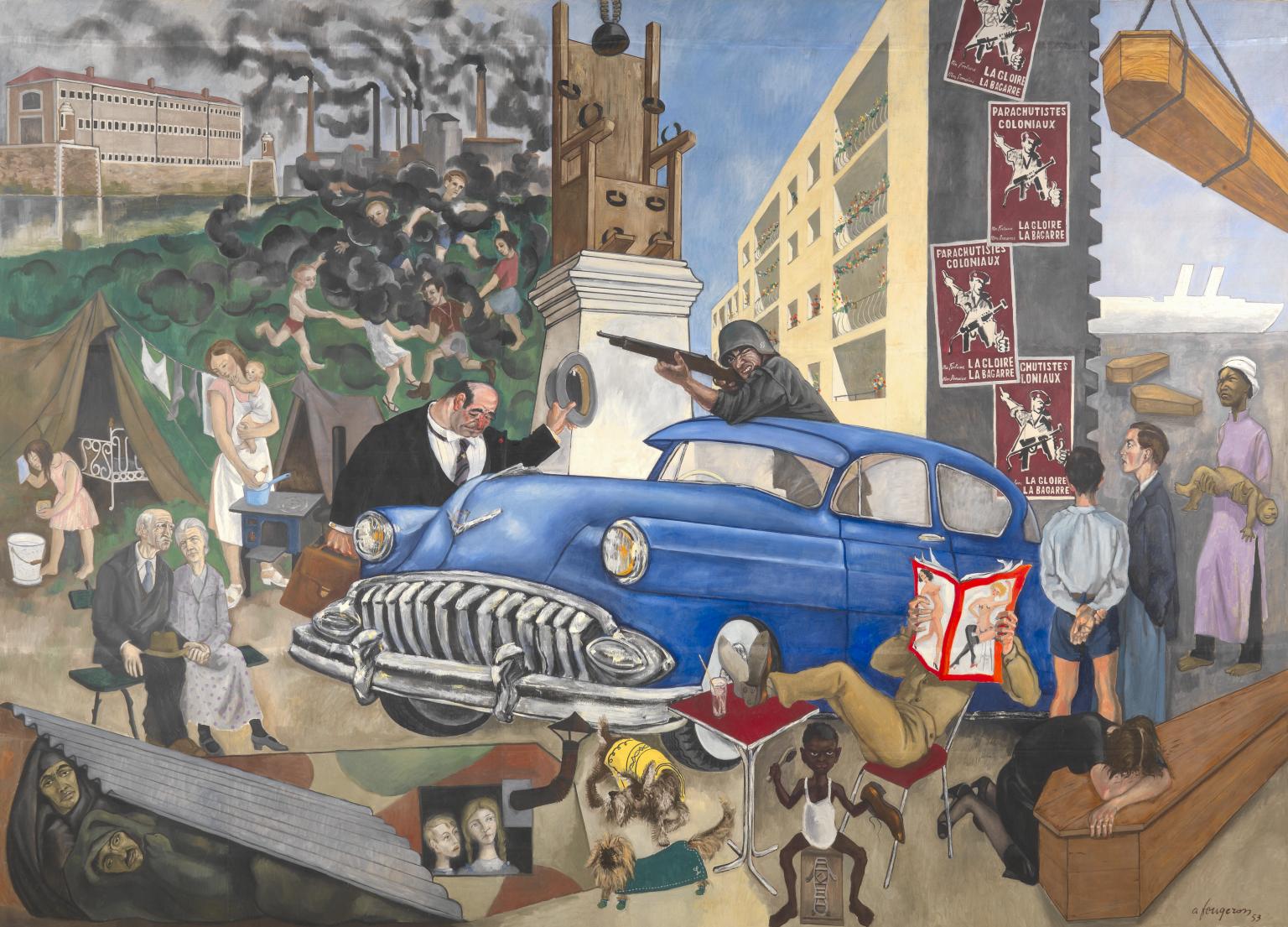
André Fougeron, Atlantic Civilisation 1953
Fougeron intended this work, first shown in Paris in 1953, to be an unsettling image. He uses harsh caricatures and stereotypes to criticise the Americanisation of Europe. A businessman representing France greets a US car, symbolising capitalism. His appearance is an antisemitic stereotype, conforming to Communist propaganda in the 1950s. At the time, Fougeron was associated with the French Communist Party. The artist depicts the US soldier reading pornographic magazines, a Black child shining shoes, and Algerian refugees sheltering under corrugated iron to condemn US global power, the exploitation of the underprivileged, and French colonialism in Africa.
Gallery label, January 2023
6/19
artworks in Beyond Pop
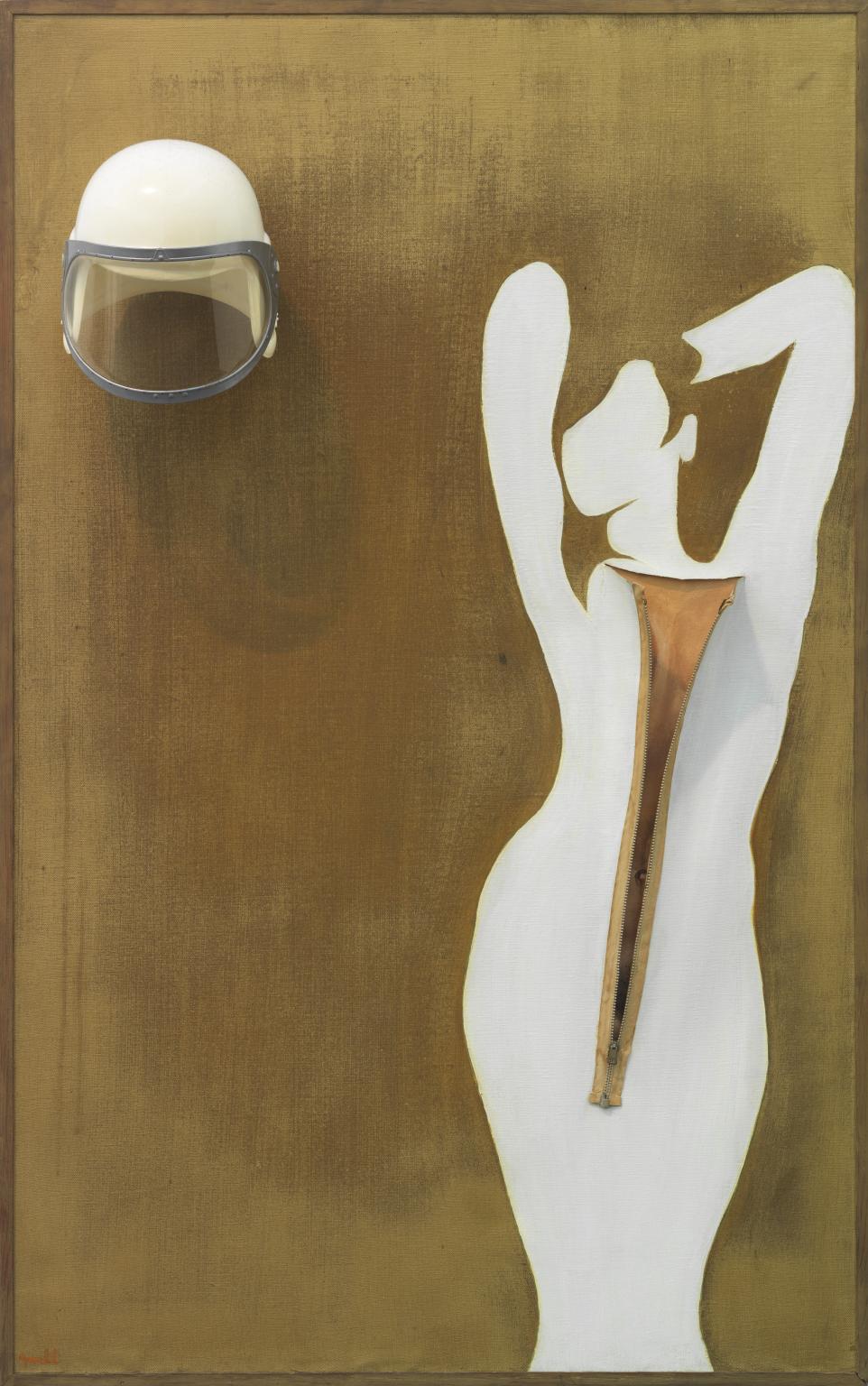
Evelyne Axell, Valentine 1966
In Valentine Axell combines an idealised feminine silhouette with a spacesuit helmet. It was made during the 1960s space race, when the United States and the Soviet Union competed for dominance in space exploration. The title refers to Soviet cosmonaut Valentina Tereshkova, the first woman in space. Axell presents her as both a feminist heroine and a sexualised figure. Axell’s paintings have been described as a ‘sexual revolution in art’. They combat gender discrimination, linking women’s political and social freedom with female sexuality.
Gallery label, August 2018
7/19
artworks in Beyond Pop
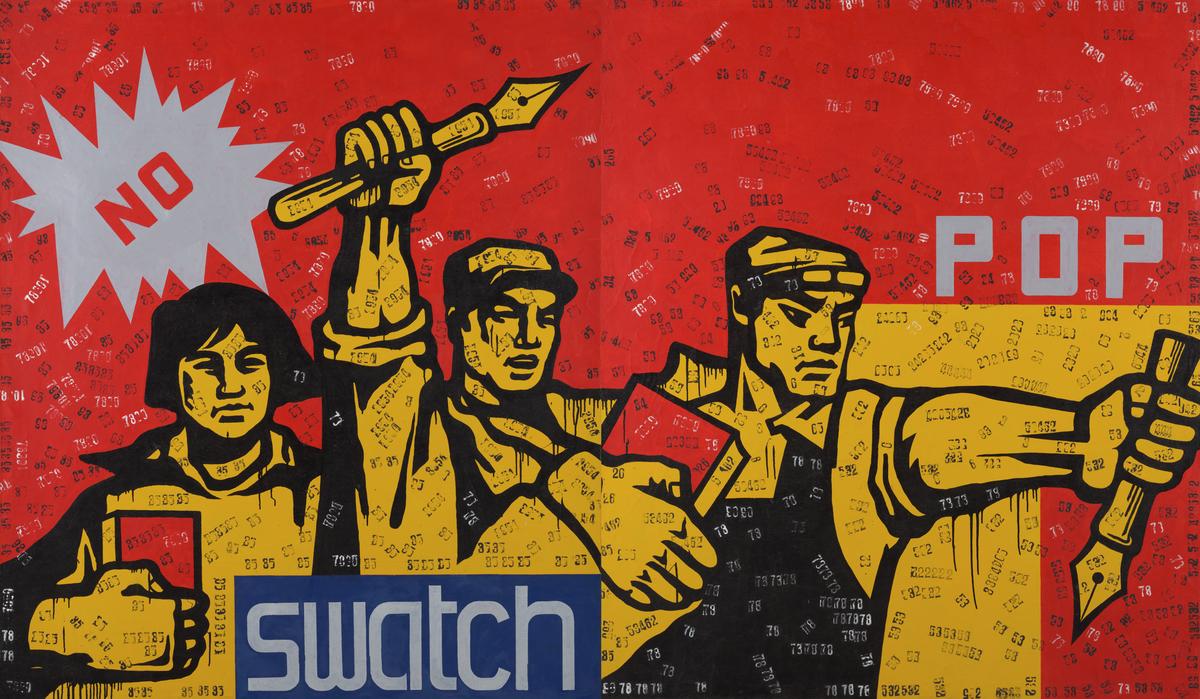
Wang Guangyi, Great Criticism - Pop 1992
Wang grew up during China’s Cultural Revolution, an era of radical cultural, political and social change. In the 1970s he worked as a painter of propaganda posters. During the 1980s, government reforms led to a shift away from China’s previous communist system towards increasing levels of foreign investment and consumerism. Wang sought to unite these opposing forces on the canvas by bringing together popular political and commercial symbols in a style that came to be known as 'political pop’. In doing so, he aimed to depict the reality of Chinese society. Chinese communist imagery and Western logos and brands appear together, alongside numbers representing Chinese barcodes.
Gallery label, January 2022
8/19
artworks in Beyond Pop
Sorry, no image available
Robert Indiana, Hole 1960–2, bronze cast 1991
9/19
artworks in Beyond Pop
Sorry, no image available
Robert Indiana, GE 1960–2, bronze cast 1991
10/19
artworks in Beyond Pop
Sorry, no image available
Robert Indiana, Orb 1960–2, bronze cast 1991
11/19
artworks in Beyond Pop
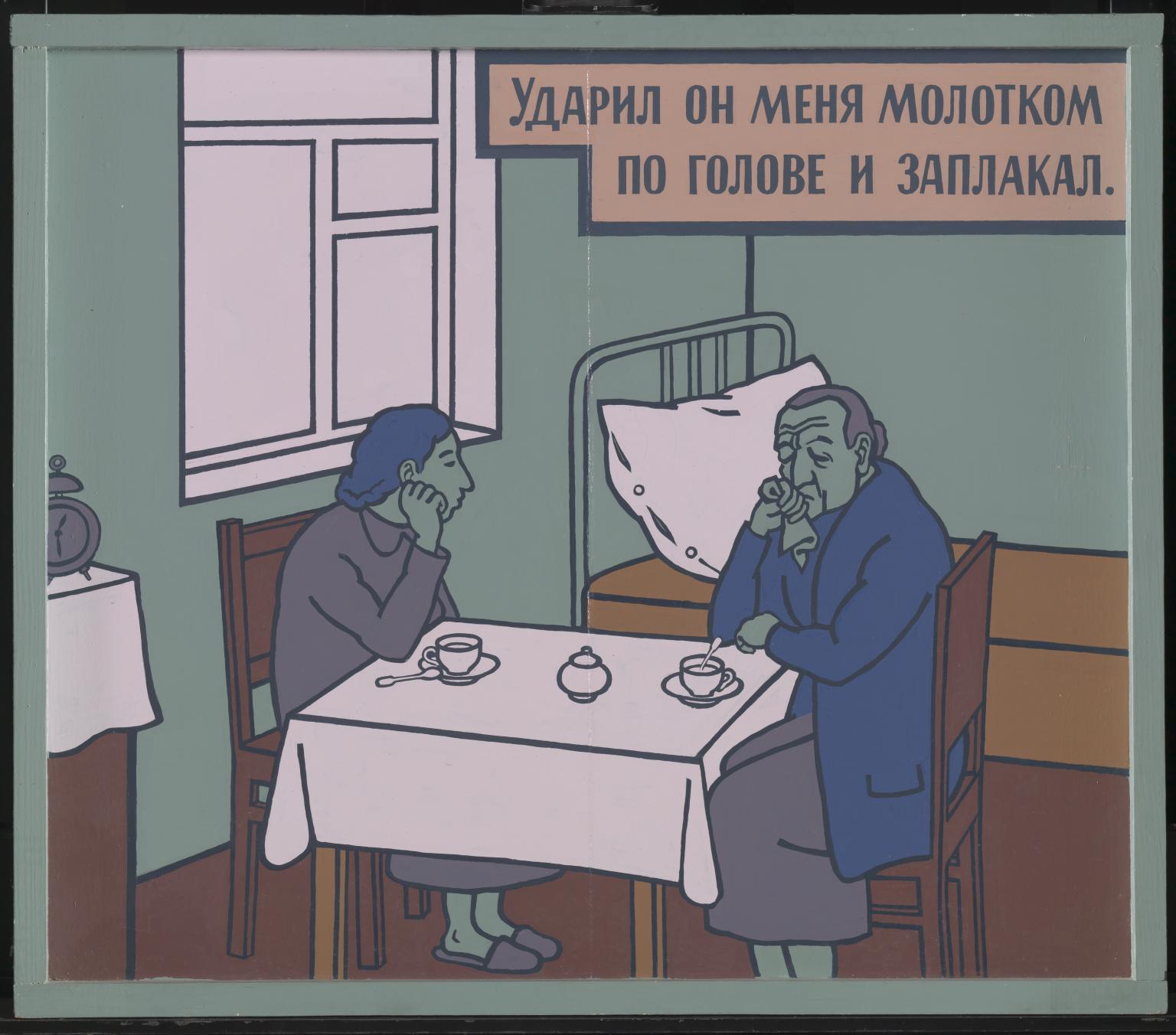
Viktor Pivovarov, (He) Hit Me with a Hammer and Burst into Tears 1992
(He) Hit Me with a Hammer and Burst into Tears 1992 is a painting in enamel on canvas mounted on fibreboard. It combines image and text, presented in a comic book style. Two women sit drinking tea at a dining table, one listening attentively as the other laments her husband’s violent behaviour. Her words (which give the work its title) are presented in Russian script in a text box in the top right hand corner of the painting. A bed in the background locates the scene in a Russian communal apartment, where a single room often served as bedroom, dining room and lounge. The muted colours and bichromatic design enhance the resigned postures of the two women, imbuing the work with a sense of ennui that conflicts with the drama of the situation they are discussing.
12/19
artworks in Beyond Pop
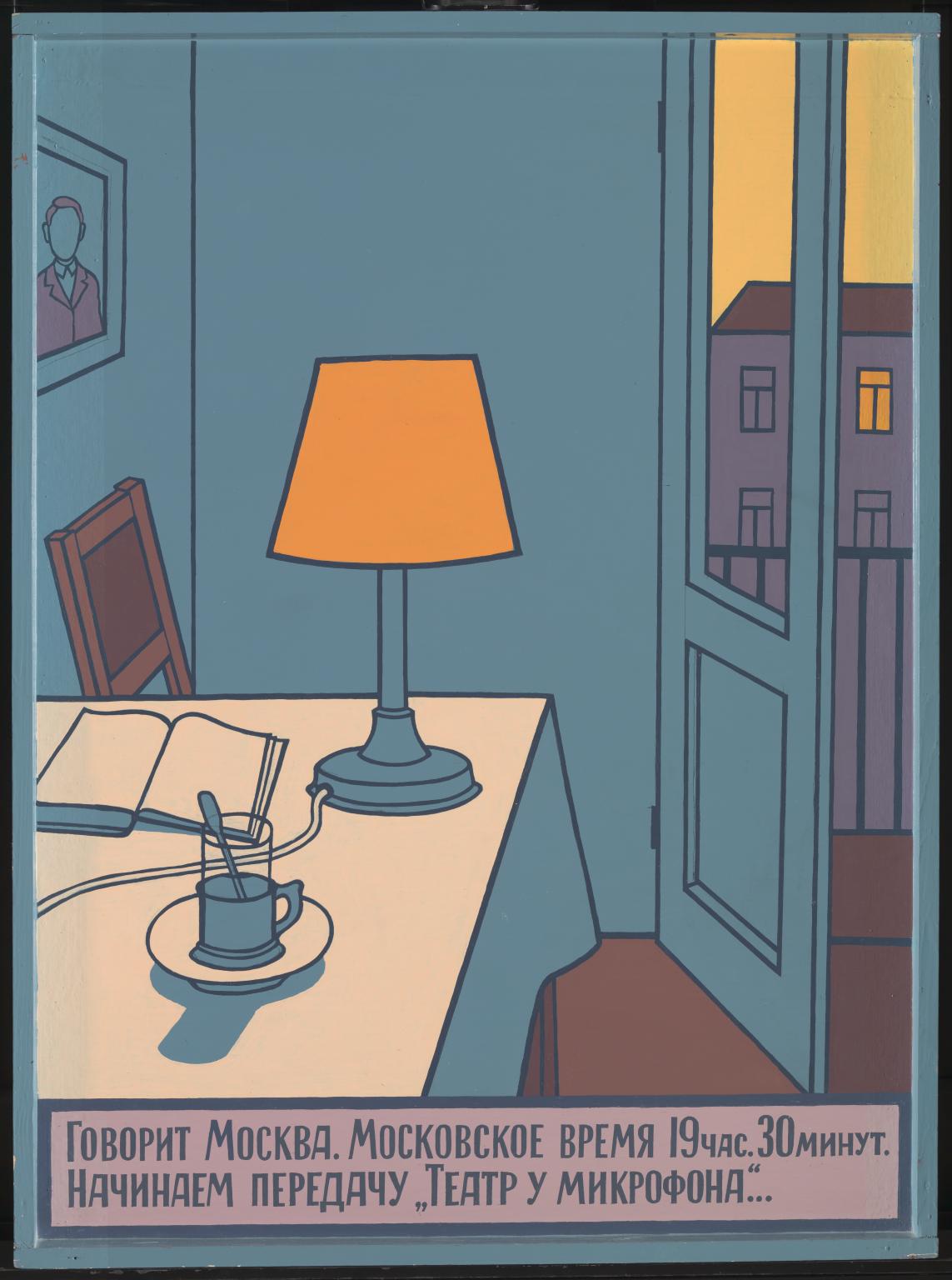
Viktor Pivovarov, This is Radio Moscow ... 1992–6
This is Radio Moscow … 1992–6 is a painting in enamel on canvas mounted on fibreboard. It combines image and text, presented in a comic book style. The painting depicts an apartment room at twilight rendered primarily in dark blue. A door opens into the room, through which a view of the sun setting behind a neighbouring apartment building, painted in a bright yellow, is visible. On a table in the foreground are a lit lamp painted in a slightly darker yellow, an open book and a half-drunk glass of tea. The Russian text that runs along the bottom of the painting and gives the work its title provides an exact time for the scene, relaying an announcement on an unseen radio: ‘This is Radio Moscow. The time in Moscow is 19 hours 30 minutes. The next show is “Theatre at the Microphone”…’ The text and objects suggest the recent presence of the apartment’s resident. However, the human figure is absent, an omission accentuated by a partly obscured portrait hanging on the wall, which shows the outline of a male bust with a blank face. Despite the seemingly innocuous and tranquil setting, these absences suggest a sense of unease and menace.
13/19
artworks in Beyond Pop
Sorry, no image available
Hervé Télémaque, The Weathervane 1969
14/19
artworks in Beyond Pop
Sorry, no image available
Robert Indiana, Bar 1960–2, bronze cast 1991
15/19
artworks in Beyond Pop
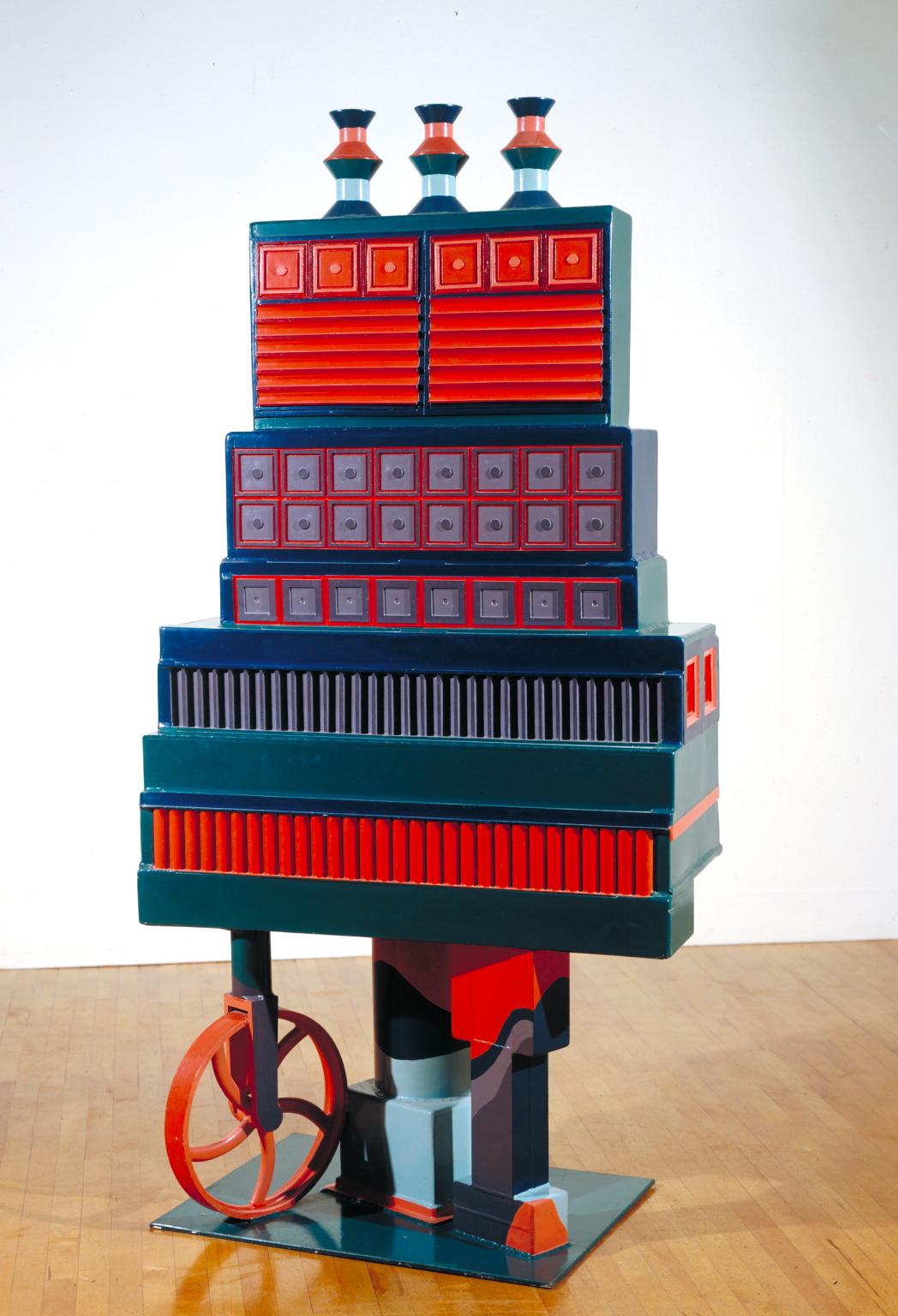
Sir Eduardo Paolozzi, The City of the Circle and the Square 1963 and 1966
Paolozzi’s sculpture is part cityscape, part elaborate machine. He describes it as an ‘urban image’. The wheel, a recurring motif in his work, symbolises technology. Instead of using existing pieces of scrap metal, as he had in earlier sculptures, he started from scratch with this work. He designed a series of geometric units made from wax. Then, a team of assistants cast them in aluminium, before welding and painting them according to his instructions. This process, in which the artist is removed from the actual manufacturing, has been called ‘industrial collage’.
Gallery label, June 2021
16/19
artworks in Beyond Pop
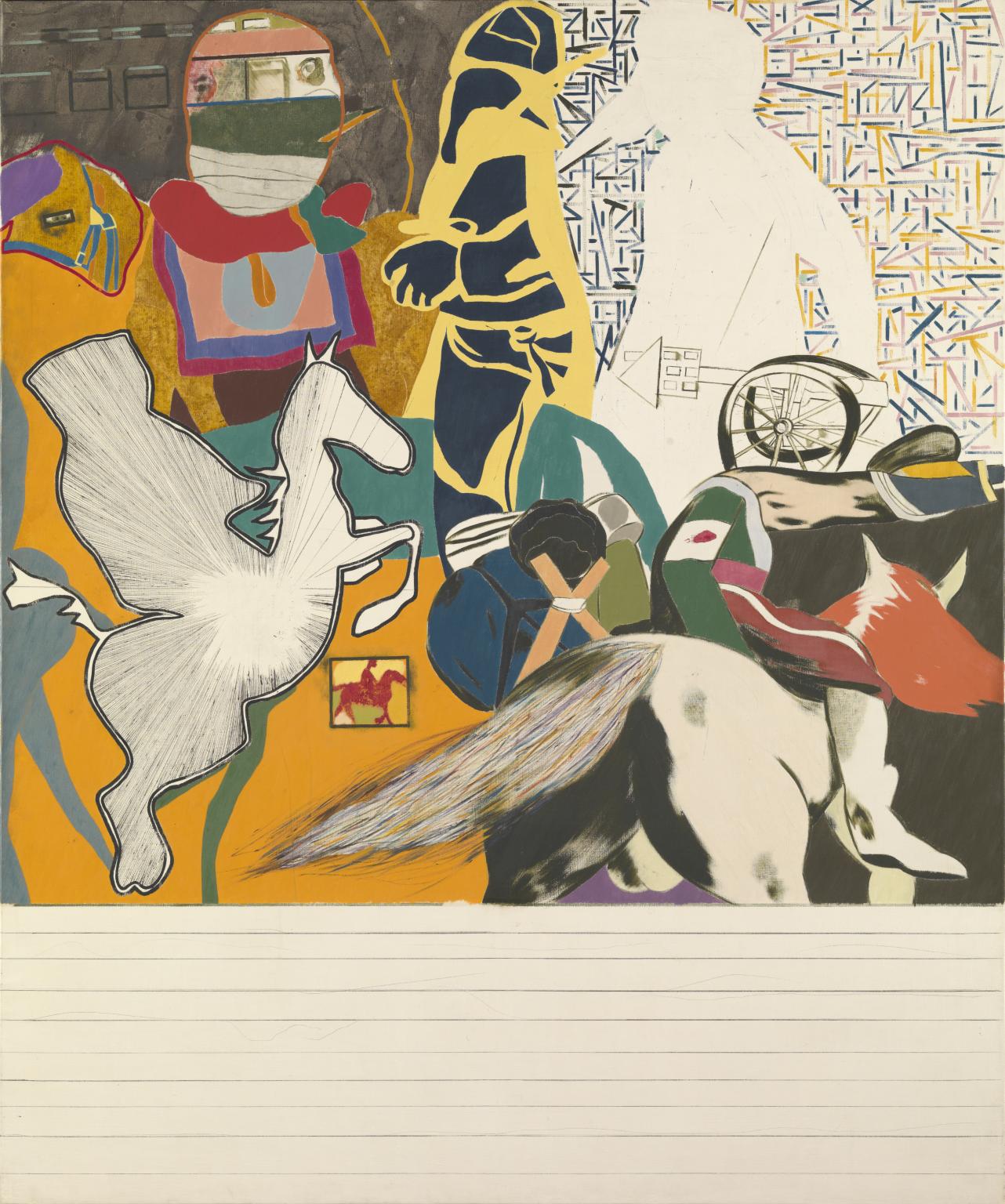
R.B. Kitaj, Isaac Babel Riding with Budyonny 1962
This painting is based on the writings of Russian author Isaac Babel. During the Polish-Soviet War of 1920, Babel accompanied the First Cavalry Army as a war correspondent. He documented the bitter realities of war in a collection of short stories titled Red Cavalry. Following Joseph Stalin’s ascent to power, these stories were withdrawn from sale, due to their negative reflection on the Red Army. They did not return to bookshelves until after Stalin’s death in 1953.
Gallery label, June 2021
17/19
artworks in Beyond Pop
Sorry, no image available
Robert Indiana, Eat 1960–2, bronze cast 1991
18/19
artworks in Beyond Pop
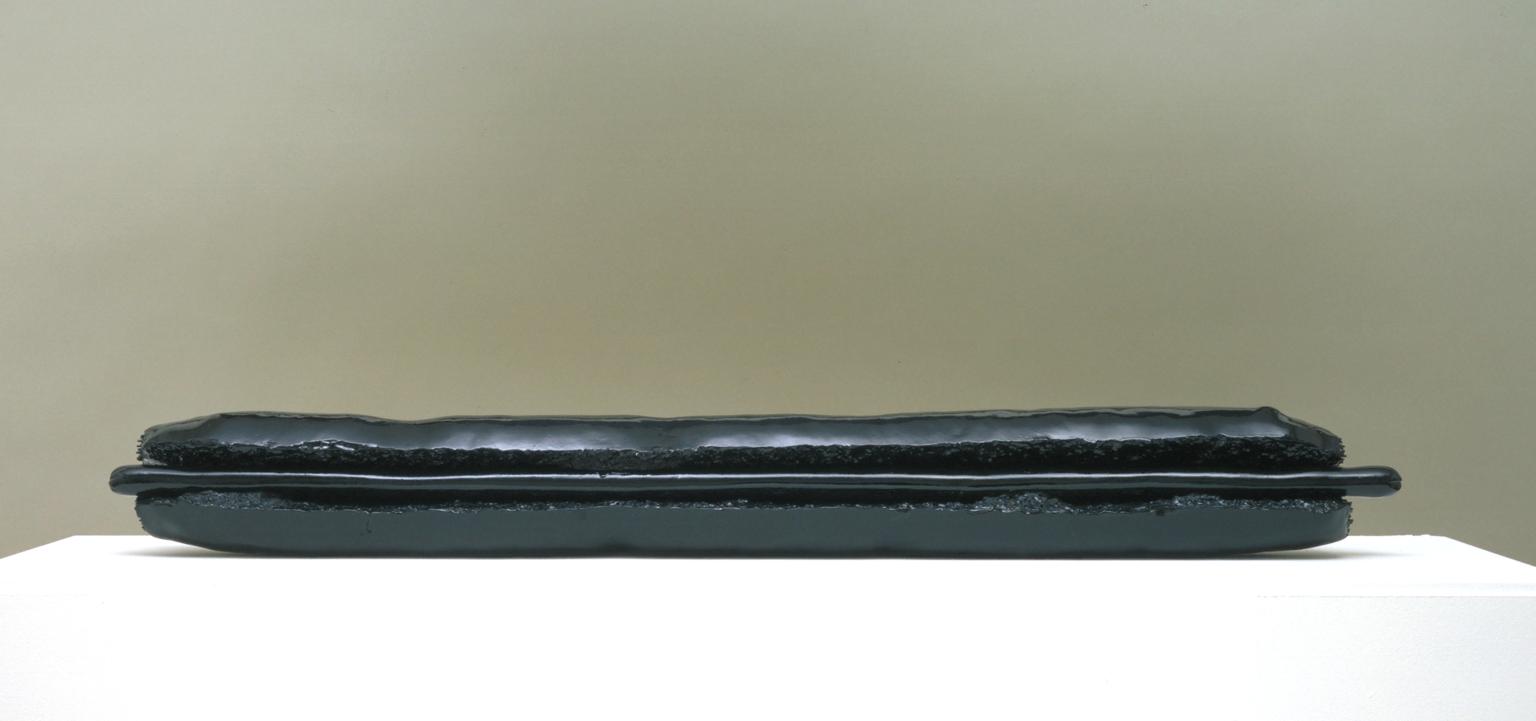
Colin Self, Hot Dog Sculpture 1965
Fast food was a typical subject for pop art in the 1960s. It represented consumerism and a new fast-paced society. Many artists in the 1960s celebrated consumption. But Self’s Hot Dog Sculpture focuses on the darker side of the decade. The blackened hot dog relates to military conflict. Its charred appearance reflects Self’s anxiety about a possible nuclear war.
Gallery label, August 2019
19/19
artworks in Beyond Pop
Art in this room








Sorry, no image available
Sorry, no image available
Sorry, no image available


Sorry, no image available
Sorry, no image available


Sorry, no image available

You've viewed 6/19 artworks
You've viewed 19/19 artworks
